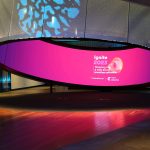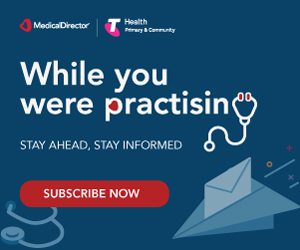New VR and AR innovation in pregnancy
Giving birth is now propelled into the virtual space with new innovations in both virtual reality and augmented reality developed by the University of Newcastle (UON).
Using the Samsung GearVR and HTC Vive (VR) and HoloLens (AR) headsets, the new innovation gives world-first visual insight into the internal stages of childbearing and its effect on the human body, signifying a huge step for health practitioners and expectant parents globally.
UON students will be among the first in the world to learn key anatomy changes, birthing techniques and real-world emergency scenarios via virtual and augmented simulation.
Simulating real-world delivery scenarios
In collaboration between UON’s School of Nursing & Midwifery and the University’s Innovation Team, the first of the new VR projects simulates a ‘real-world’ style delivery room, providing midwifery students with a virtual emergency neonatal resuscitation scene.
Run via an app developed for PC, iOS and Android, the technology allows students to undertake a series of steps to pass the time-critical scenario, which can be undertaken with a virtual ‘helper’ in a practice mode, or individually in a formal test.
“With 15 per cent of births in Australia and New Zealand requiring some form of resuscitation – a number even higher in premature babies – it is imperative our students feel comfortable and confident applying their experience in a time-critical, emergency environment,” Lecturer in Midwifery and co-project leader, Ms Jessica Williams, said. “Neonatal resuscitation is a vital but advanced skill, meaning naturally the training takes time and resources to complete. As the simulation is easily accessible and portable, our students can study anywhere at any time.”
A digital journey through gestation
Through the use of a digital headset, Road to Birth takes users on a journey through pregnancy, depicting a life-size female figure in front of them, whose gestation can be explored and observed.
Incorporating a pregnancy timeline, key anatomy and circulatory systems, as well as expert commentary from experienced midwives at each stage of pregnancy, users can employ the program to investigate the internal changes as the baby develops.
A collaboration between UON’s School of Nursing and Midwifery and the IT Innovation Team, key features include crucial birth considerations like the baby’s orientation and placental positioning.
Road to Birth also offers students a world-first opportunity to follow a detailed, realistic and 3D figure through a pregnancy without any visual barriers.
“At the moment we teach with dolls and pelvises, and I can tell you firsthand from being a student as well as an educator, the position of the placenta is one of the hardest things to learn, and yet it’s absolutely one of the most imperative things to know,” Jones added. “If a midwife can’t identify its position and lets the woman go into natural labour with the baby obstructed, the baby’s life is at serious risk – simple as that.”
Jones, acknowledged the delivery room could often be a dangerous place, with common issues such as the incorrect positioning of the placenta having the potential to be catastrophic. And with around one in 25 babies born in a breech position and one in 100 presenting in a position other than the ideal vertex, Jones said the new program was vital to significantly transform the future of midwifery education.
“First year midwifery students come into the program and within the first semester are going out and witnessing their first birth,” she said. “They’re exposed to situations that have the potential to be confronting.
“Not only will this application introduce them to the realism of anatomy, but it bridges the gap between classroom and delivery suite to ensure cognitive resilience, which is going to make them perform better under pressure.”
Augmented study of human anatomy
In addition to the neonatal resuscitation simulation, UON’s Innovation Team developed a new AR resource to assist with anatomy and physiology education.
Using a HoloLens headset to project a hologram into the users’ actual surroundings, the team developed a gender-changeable human form with interactive ‘layers,’ which expose the different working functions of the body.
Innovation Manager, Craig Williams, said the key was identifying challenges in teaching and learning where innovative technologies using visual interactive simulation can provide a new perspective to assist with education.
“The benefit of an educator being able to utilise VR and AR to teach these complex areas of study is that there is a clear working depiction of the subject right before their eyes, which can be projected and shared with a classroom,” he explained. “Health resources are often a textbook picture, which can lack detail, or a real-life subject, which involves the consent of a third-party.
“Virtual and augmented simulation combats this with the ability to provide ease of access with an incredible level of complexity and detail.”
With the predicted success of the new resources, UON’s Innovation Team is already nearing completion on its next project, which is to update the HoloLens figure to depict a pregnant woman and give students the opportunity to understand more comprehensively gestation and the impact the baby’s position has prior to childbirth.
Real-world impact
The technological advances are likely to have significant impact on the future of education around the world, as well as substantial benefits for industry. Meanwhile the implications of UON’s advances in VR and AR are set to have even wider impact on the broader community and industry, both locally and internationally.
According to Williams, the limits to leveraging VR and AR capabilities in education and health can open up not only new educational opportunities, but help patients and health professionals understand pregnancy in a new way.
“The limits to VR and AR are endless, with advancements across the globe developing at a rapid rate, but we hope these key educational projects will progress health and medicine education in ways that haven’t been explored before,” he said. “Pregnancy can be a daunting time, with expectant parents often left to rely on health professionals and online tools to fully understand the significant changes in their own bodies.
“The scope of Road to Birth is clear, with its impact having the potential to reach a global audience, from students and health professionals in cities and remote locations, to expectant parents wanting to understand more about their pregnancy.”









